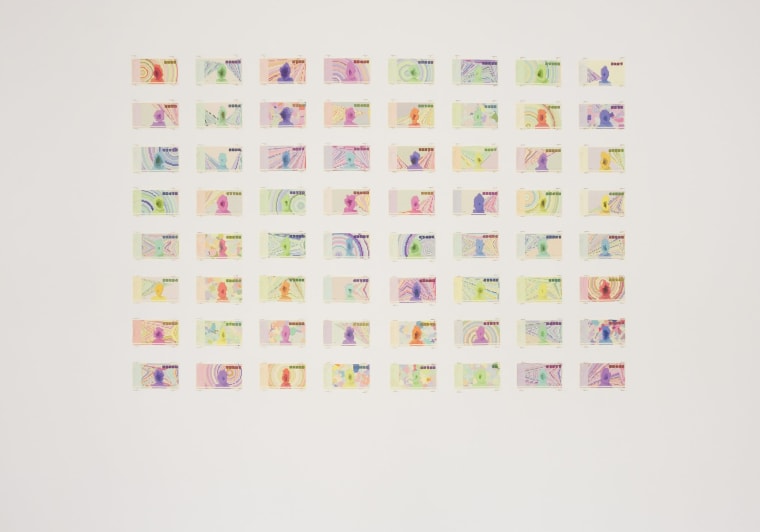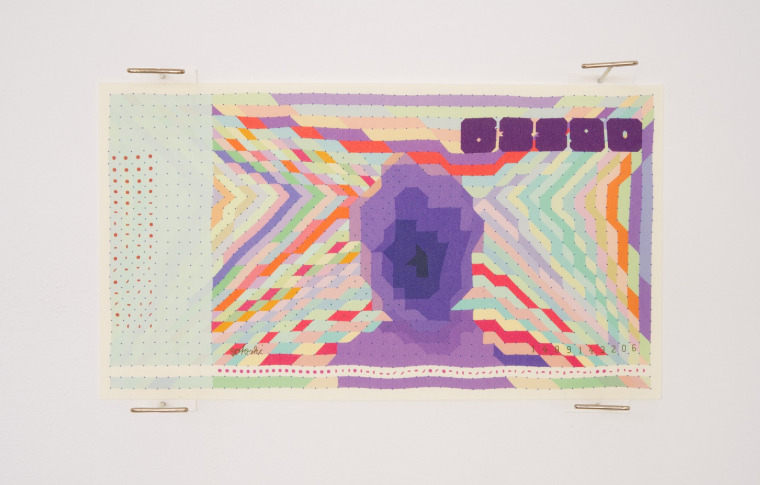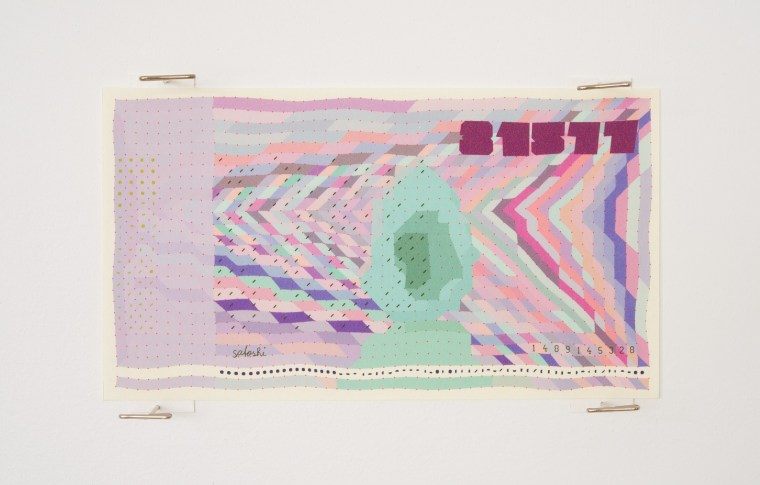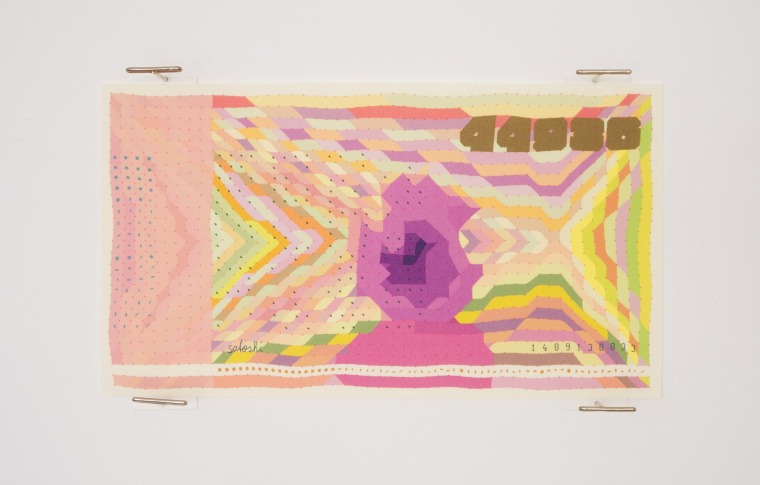Bitcoin isn’t like traditional currencies, and not just because it doesn’t exist as actual coins or paper banknotes.
Unlike traditional currencies like the dollar or euro, Bitcoin isn’t controlled by a single government or central bank. Instead, every transaction involving the popular cryptocurrency is logged in a computerized public ledger called a blockchain. This collection of receipts is maintained on millions of devices around the world in individual collections called blocks. Each time there’s a transaction involving Bitcoin, an anonymous data “fingerprint” appears in a block recording the exchange.
This key innovation is the basis for "Block Bills," a collection of paper banknotes that bring the virtual payment system into the real world. As works of art, the whimsical bills have no monetary value. But they provide a “map” to the inner workings of the Bitcoin system—and they have a subtle beauty all their own.

“In some way, the project is a loose data visualization, but I mainly wanted to make the bills be interesting on their own as artworks,” says Matthias Dörfelt, the Los Angeles-based artist who made the notes.

Each of the 64 bills in the collection represents a single block in the blockchain ledgers. The colors vary according to the volume of transactions. A less colorful bill represents low volume, while a more color bill represents high volume.
In some way, the project is a loose data visualization, but I mainly wanted to make the bills be interesting on their own as artworks.
Matthias Dörfelt, artist
At the bottom of each bill is a white bar with symbols that represent the specific address of the Bitcoin. On the left is a series of dots that encode the history of all the transactions. The timestamp at the bottom-right corner of each bill indicates the moment when that block of transactions was created.

Lastly, the centers of the bills feature an indistinct image of a human being or imaginary creature. The idea here, Dörfelt says, was to create “something that reflects all the supposed privacy and anonymity connotations that Bitcoin has."
